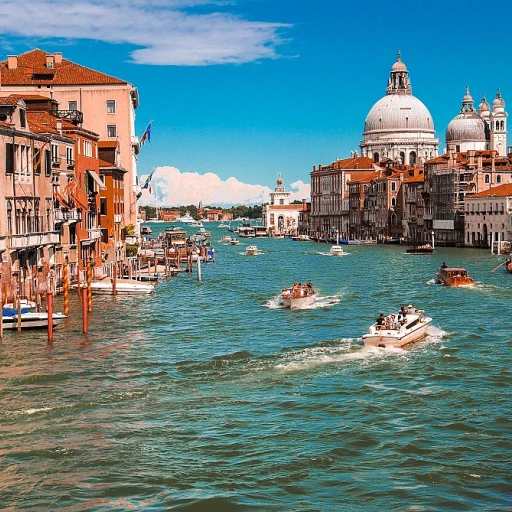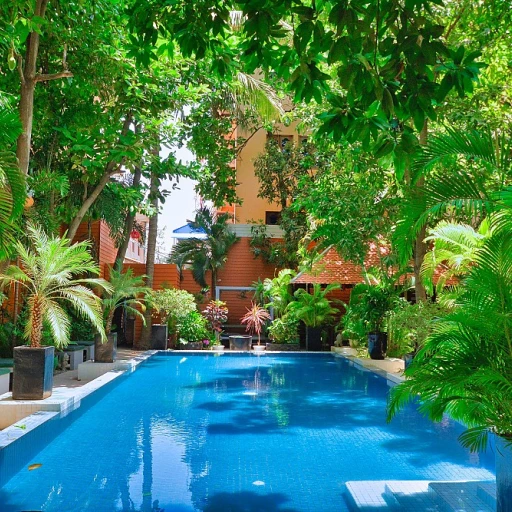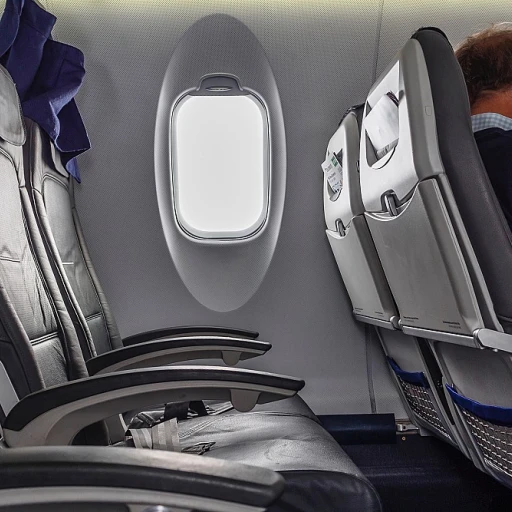Understanding the Annapurna Circuit Trek Map
Understanding the intricacies of the Annapurna Circuit trek map is fundamental for ensuring a successful journey through this iconic trail in Nepal. Given its reputation among trekking enthusiasts, this circuit offers a diverse landscape, combining high altitude challenges and culturally rich experiences.Deciphering the Annapurna Circuit Landscape
The Annapurna Circuit is renowned for its breathtaking views and varying terrains. The trek will guide you through lush forests, high altitude villages, and rugged mountain paths, providing a comprehensive taste of Nepal's natural beauty. A review of the circuit map will reveal critical points such as Thorong Pass and Muktinath, each pivotal due to their elevation and cultural significance.Key Stops and Route Features
- Kathmandu to Pokhara: Most journeys commence from Kathmandu, transitioning to the trailhead from the charming city of Pokhara.
- Manang: Known for its elevations reaching over 3,500 meters, Manang is a crucial acclimatization stop along the circuit.
- Yak Kharka to Thorong Pass: Elevation increases in this section, leading to Thorong Pass – the highest point of the trek. Acclimatization is critical here to avoid altitude sickness.
- Descent to Muktinath: The route offers a descent towards Muktinath, a site embodying spiritual significance.
Planning Your Day Trek
Balancing the trek distance and duration is vital. Most trekkers opt for a journey of around 15-20 days, covering approximately 160-230 kilometers. Daily trekking hours vary, typically between 5 and 8 hours per day depending on one’s pace and acclimatization needs. For more insights on how Annapurna Circuit compares to other major treks, such as Everest expeditions, consider exploring this 42-day Mount Everest Expedition. Whether you're an experienced trekker or new to the circuit trekking experience, understanding the map and preparing adequately will make your Annapurna adventure a memorable one.Unique Challenges of the Annapurna Circuit
Overcoming the Terrain
Embarking on the Annapurna Circuit trek presents unique challenges that test even seasoned trekkers. The route is as rewarding as it is demanding, with varied terrains that require careful navigation. From the lush subtropical forests near Pokhara to the arid landscapes around Muktinath, each day on the trail offers new obstacles. Trekkers must be prepared for steep ascents and descents, often within the same day, which can be physically taxing.
Managing High Altitude
One of the most significant challenges of the Annapurna Circuit is managing the effects of high altitude. As you approach the Thorong Pass, the highest point of the trek at 5,416 meters, altitude sickness becomes a real concern. It's crucial to acclimatize properly by spending extra days in places like Manang or Yak Kharka. Monitoring symptoms and understanding the risks associated with high altitude is vital for a safe trek.
Weather Variability
The weather on the Annapurna Circuit can be unpredictable. While the circuit map provides a general idea of the route, it doesn't account for sudden weather changes that can impact your trekking plans. From heavy rains to unexpected snowfalls, being prepared for all weather conditions is essential. This means packing appropriate gear, as discussed in the gear section, and being flexible with your itinerary.
Remote Trail Sections
Certain sections of the Annapurna Circuit are quite remote, requiring trekkers to be self-sufficient. The stretch between Tilicho Lake and the base camp is particularly isolated, with limited access to supplies. Planning your trek map and carrying enough provisions for these remote days is crucial. Additionally, understanding the trail's distance and duration in hours helps in managing daily expectations.
For those looking to indulge in luxury accommodations after conquering the circuit, consider the options available in nearby cities like Kathmandu and Pokhara, where you can relax and recuperate.
Essential Gear for the Annapurna Circuit
Gearing Up for the Trek
Embarking on the Annapurna Circuit is an adventure that requires careful preparation, especially when it comes to the gear you'll need. The trek, which can span several days, takes you through diverse landscapes, from the bustling streets of Kathmandu to the serene heights of Thorong Pass. Here's a breakdown of essential gear to ensure a successful journey.
Clothing Essentials
- Layering System: The key to staying comfortable is layering. Start with moisture-wicking base layers, add insulating mid-layers, and finish with a waterproof outer layer. This system allows you to adjust to the varying temperatures and conditions along the circuit.
- Sturdy Footwear: Invest in high-quality trekking boots with ankle support. The rugged terrain of the Annapurna Circuit, especially around areas like Yak Kharka and Manang, demands durable footwear.
- Accessories: Don't forget a warm hat, gloves, and a buff or scarf. These items are crucial for high-altitude sections where the temperature drops significantly.
Technical Gear
- Backpack: A good backpack with a capacity of 40-50 liters should suffice. Look for one with a comfortable fit and easy access pockets.
- Trekking Poles: These can be a lifesaver, providing stability on uneven trails and reducing strain on your knees during long hours of trekking.
- Sleeping Bag: Choose a sleeping bag rated for sub-zero temperatures, as nights can be cold, especially at higher altitudes.
Safety and Navigation
- Map and Compass: While the trail is well-trodden, having a trek map and compass is essential for navigation, particularly in less populated areas.
- First Aid Kit: A comprehensive first aid kit should include altitude sickness medication, blister treatment, and basic medical supplies.
- Headlamp: A reliable headlamp is crucial for early morning starts or late arrivals at camp.
Preparing the right gear is a critical step in ensuring your Annapurna Circuit trek is as enjoyable and safe as possible. With the right equipment, you'll be ready to tackle the unique challenges and breathtaking vistas this legendary route has to offer.
Cultural Encounters Along the Trek
Cultural Treasures Along the Annapurna Path
Embarking on the Annapurna Circuit trek offers more than awe-inspiring views and demanding trails; it provides an enriching cultural tapestry that unwinds as you traverse the map of this iconic route. Nepal's cultural heartbeat becomes apparent through varied encounters on the trail.- Villages of Manang and Yak Kharka: As you make your way through these villages, you'll experience the traditional lifestyle of the Himalayan people. The architecture and customs are deeply rooted in Buddhist traditions, providing a glimpse into the spiritual aspect of life at high altitudes.
- Gompas and Monasteries: The trek is interspersed with numerous gompas (Buddhist temples) and monasteries, which are not only spiritual havens but also storehouses of history. It's a practice to seek blessings for safe passage as you approach the formidable Thorong Pass.
- Muktinath: A sacred site revered by Hindu and Buddhist pilgrims alike. Reaching Muktinath on the circuit trek is a spiritual high point, inviting you to reflect upon the interconnectedness of faith and nature.
- Local Festivals: If the timing of your day trek coincides, local festivals can offer a vibrant contrast to the serene mountainscapes. They reveal the animate rhythm of life in these villages, complete with music, dance, and traditional attire.
- Cultural Exchanges: Communicating with local guides and hosts along the trek provides valuable insights. They often share stories about their life on the circuit, offering unique insights that enhance your understanding of this part of Nepal.
Environmental Considerations on the Circuit
Preserving the Pristine Beauty of Annapurna
Trekking the Annapurna Circuit is more than just an adventure; it is a journey into a delicate ecosystem that must be respected and preserved. As you embark on the trek, awareness of the environmental impact your journey might have is crucial. From the very moment you step onto this remarkable trail, each decision can contribute to the preservation of this natural wonder.
Minimizing Your Footprint
One of the primary concerns on the Annapurna Circuit is waste management. As you make your way from villages like Manang to the spiritual haven of Muktinath, the sight of waste occasionally blemishing the trail can be disheartening. It's essential to carry out all non-biodegradable waste, ensuring it doesn't disrupt the serene beauty of the circuit. Utilizing reusable containers for your meals and water, and abstaining from the single-use plastic bottles that tempt even the most seasoned trekkers, can significantly reduce your environmental footprint.
Respecting the Fragile Ecosystem
Traveling at high altitudes, especially around Yak Kharka and the formidable Thorong Pass, can impact the fragile local flora and fauna. Keeping trekkers to designated paths helps to protect these ecosystems. The map of the Annapurna Circuit clearly delineates these routes, ensuring that the trekkers do not inadvertently contribute to the degradation of pristine environments. Remember, each step you take leaves a mark, so staying on the approved trek map is vital.
Supporting Local Communities
The villages along the Circuit Trek, from the vibrant streets of Pokhara to tiny settlements, rely heavily on your responsible patronage. Engaging with locally-run stores and tea houses not only lessens the environmental burden but also promotes sustainable tourism. Opting to purchase goods directly supports the communities and reduces the carbon footprint associated with transporting goods from Kathmandu or elsewhere.
Altitude and Climate Awareness
As altitude changes dramatically throughout the circuit, the susceptibility to altitude sickness can pose a severe risk, highlighting the importance of pacing and acclimatization. The high-altitude environments, such as those found near Tilicho Lake and the Annapurna Base Camp, have unique considerations, including fluctuating weather patterns that require prompt adaptation. Always be prepared for rapid weather changes, which can range from intense sunlight to biting winds within mere hours.
Preparing for the Annapurna Circuit: Tips and Tricks
Gearing Up for the Annapurna Adventure
Embarking on the Annapurna Circuit trek requires thoughtful preparation. From Kathmandu to the following circuit route, every day presents unique tests. Equipping yourself adequately ensures a safer and more enjoyable journey.Physical Conditioning and Altitude Acclimatization
High-altitude environments like the Annapurna Circuit demand trekkers to be in good physical condition. Regular cardiovascular exercises, such as running or cycling, will prepare your body for the physical demands. Familiarize yourself with the trek map to understand the altitude variations, especially near Thorong Pass and Muktinath, which are crucial locations for acclimatizing.- Exercise Routine: Engage in a consistent fitness regimen at least two months before your trek.
- Acclimatization: Include rest days in Manang or Yak Kharka to adjust to the altitude.
Packing Essentials
When examining the circuit map, packing the right gear can make all the difference. Opt for lightweight, durable items suitable for the varied terrains of the Annapurna Circuit.- Clothing: Layered clothing is key. Base layers, a good fleece, and a down jacket are crucial for fluctuating temperatures.
- Footwear: Wear sturdy, well-broken-in trekking boots. Your feet will be your most valued asset across the circuit.
- Accessories: Don’t forget thermal socks, gloves, a hat, and a reliable trekking pole for stability on rugged trails.
Route Familiarization and Safety Measures
Understanding the trail, including landmarks like Tilicho Lake and Annapurna base camp, helps with planning your day trek shifts. Familiarizing yourself with the Annapurna circuit map significantly aids in navigating these routes.- Trail Knowledge: Study the map to identify challenging spots and potential acclimatization points.
- Safety Gear: Equip yourself with a well-stocked first-aid kit to handle emergencies like altitude sickness or minor injuries.
Navigating Altitude Challenges
One of the greatest trials of the Annapurna trek is managing altitude sickness, particularly close to Thorong Pass. You should be aware of the symptoms and take preventive measures.- Hydration: Drink plenty of water throughout your trek to help acclimatization.
- Medication: Consider consulting a doctor about altitude sickness medication before leaving Kathmandu.












-large-teaser.webp)